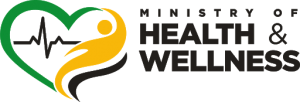Commercial Sex Workers
Sex work is defined as “the exchange of money or goods for sexual services, either regularly or occasionally, involving female, male, transgender adults, young people and children where the sex worker may or may not consciously define such activity as income-generating” – UNFPA.
The national strategy for sex workers has three main features: empowerment workshops in all the regions (SERHA, SRHA, NERHA & WRHA), freaky night (club)/street site interventions and a drop in centre where the ladies can access reproductive health services. The empowerment approach is intended to address social vulnerability and reduce risk of HIV transmission. The sex worker is equipped with the skills needed to overcome barriers and incrementally take control of their health. This approach may be more sustainable as they are making an informed, conscious decision to adopt certain behaviours (testing, consistent condom use, regular STI checks and adherence to ARVs if infected with HIV).
Men Who Have Sex With Men (MSM)
The Men’s Health programme for men who have sex with men (MSM) aims to increase consistent condom/lube use, reduce multiple partners, increase treatment seeking for STI, build referral system, reduce vulnerability via skill building, reduce stigma/discrimination and identify new HIV cases.
The main feature of this programme is the empowerment workshop which can be broken down into three phases: recruitment/planning, workshop (medical checks/HIV/STI information/empowerment opportunities – TRN, birth certificate, further education/skills) and certification ceremony.
Persons Living with HIV
Positive Prevention is the main programme that has been designed to address persons living with HIV (PLHIV) to prevent the onward transmission of HIV. The roll out of positive prevention takes the form of workshops across the island that utilizes the positive prevention curriculum as a guide to reducing risky behaviours that expose PLHIV, their sex partners and offspring to HIV infection. Additionally, these workshops aim to provide linkages for PLHIVs to relevant social support systems and to foster a supportive environment for PLHIV within health care systems and communities.
Adolescents
There are two interventions designed to target adolescents:
- Hold On, Hold Off In-school Intervention
The intervention is a site based initiative designed for young people in school settings. Strategies and messages were designed to cater to the needs of the site. Sites are chosen based on; location, high risk, low literacy, request from schools experiencing inappropriate sexual behaviour.The hold on, hold off programme that includes a h3 abstinence component consist of a structured (class) sessions, informal (lunch time) sessions, club based program, sensitization of staff and parents and four (4) weeks summer camp for persons identified as potential peer educators. - Out of School Youth Intervention
Out of school youth (OSY) are defined as young people between the ages of 13 – 19yrs who are not attached to any formal institutions. Sometimes OSY are found as young as 8 – 12years old. UNESCO (2006) stated that OSY are youth who are less likely to be involved in any activity that will contribute to their education and employment status. It is estimated that there are between 160,000 – 200,000 OSY in Jamaica (PIOJ, 2006).The OSY population consist of young people who dropped out of school as a result of pregnancy, several behavioural issues or come from homes with financial/social problems. In rolling out the strategy, the National HIV/STI Programme partners with Heart Trust NTA, National Council on Drug Abuse, Jamaica Foundation for Lifelong Learning, barber shops in nearby communities, teachers (internal or external), Registrar General’s Department, NGOs working in the community and community youth clubs.
Inmates/Incarcerated Youth
The estimated prevalence of the adult population in Jamaica is 1.6% while that of the 5000 prison inmates as at 2005 is 5%. Persons located in the section where individuals are labeled as men who have sex with men (MSM) and separated were 17% times more likely to test positive for HIV than those located in the main section.
The HIV programme in the prisons comprise of parolee intervention, sex partner/visitor education, positive prevention for PLHIV and a peer educators programme. In the prisons, inmates are screened for Voluntary Counseling and Testing (VCT) for HIV/AIDS, Syphilis and Hepatitis, inmates infected with HIV are identified and their care facilitated, HIV prevention information provided to all categories of inmates and their efficacy in condom use among soon to be released and paroled inmates built.
